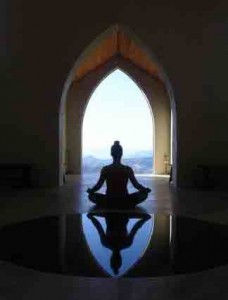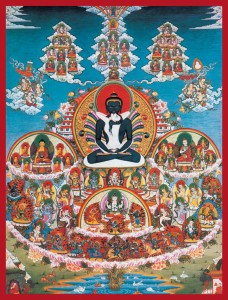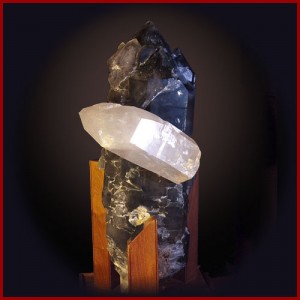
The following is an excerpt from a teaching by Jetsunma Ahkon Lhamo called “Perception”
So, if you are conscious, does that lead you to the assumption that self-nature is real? Yes, it does. Of course it leads you to the assumption that self-nature is real. What are you doing here if you don’t think self-nature is real? I mean, be real. Why are you sitting here listening to this teaching so that you can attain realization in order to benefit beings? The whole thing is built on the assumption of self being real. I mean, you go to work every day. Would you go to work if self wasn’t real? It doesn’t make any sense at all, does it? Would you go through what you go through if self wasn’t real?
So, self is real. Where we get into trouble is when we try to find self. If you go through the process that I have described, and if you really do it diligently, if you follow that process and follow it faithfully, you will become extremely confused because then you will not know who is being confused. It will be clear to you, very clear to you, that self is not to be found.
Well, what do you do with this, I mean, really? What you’re supposed to do with this is meditate because if you try to do this with your brain, first of all, you’ll be crazy within a week. It simply won’t work. You can come to some conclusions. One thing about the Buddha’s teaching is that the philosophy is extremely appealing to the intellect. A lot of what the Buddha taught was made for very intellectual people. It was made to be sifted through and reasoned out intellectually. The Buddha’s instructions were that we should not practice anything that’s not reasonable to us and intelligent, so you must reason it out for yourself. There are even some arguments that are used about reincarnation. One can sum it up by saying that to have only one lifetime that continues into infinity is about as logical as postulating a stick with one end. It’s not logical. It does not seem as though it could be possible, or it does not seem as though it could be realistic.
So when it comes to this kind of philosophy that we’ve been learning about, one should really think on these things. Let’s say that we contemplate a little bit on this, and we come up with the dilemma that our experience is very real. I am having an experience, there’s no denying it and yet, when I come to find self, I cannot find it.
So, we might, because we’re Westerners, and because this is a habitual tendency of Westerners, and also because we are confused and deluded and sentient beings, we might want to get into this meaty kind of inner dialogue with ourselves. We might want to say to ourselves, “If I can’t find self and yet I am clearly feeling and touching and tasting and smelling and I clearly am conscious, what is happening here?”
Now if I listen to the Buddha’s teachings, and I say to myself, “Well, the Buddha teaches us that this is all a function of the assumption that self is real. Everything that I perceive seems extremely real to me, and yet it is a function, just like my fingers are a function of my body. In that same regard and with that same directness, these experiences that I’m having are actually the extensions of perception that I’m having, and the perceptions themselves are actually a function of the assumption of self. Yet, I can’t find the self, and the Buddha said, in fact, my nature is empty of self.” We might get into the trap of trying to figure out who made the assumption.
Don’t you love that question? You would love to hear the answer. What if I told you that if you paid me two hundred dollars apiece I would tell you the answer to that question. You might do it! But actually, the Buddha did not teach, really, the answer to that question. The Buddha recommended that we don’t waste our time concentrating on our ability to compute and understand some occurrence that, perhaps or perhaps not, happened in time out of mind. He recommended that we do not waste our time with philosophical questions. And the reason why we should not waste our time with such philosophical questions is that they do not lead to enlightenment, or in fact, to growth of any kind.
To have these questions answered and to be satisfied with them, one plays with them in the intellect. One uses them as toys. They’re interesting baubles to juggle. Every moment that you juggle these interesting baubles, you increase your awareness of consciousness, you increase the awareness of intellect, you deepen the self-cherishing, the clinging to self-nature as being inherently real.
Copyright © Jetsunma Ahkon Lhamo. All rights reserved







![BarcheyKunsel2[1]](https://www.tibetanbuddhistaltar.org/wp-content/uploads/2010/10/BarcheyKunsel21-204x300.jpg)
![full-moon-reflection[1]](https://www.tibetanbuddhistaltar.org/wp-content/uploads/2010/09/full-moon-reflection1-285x300.jpg)
![big-wave1[1]](https://www.tibetanbuddhistaltar.org/wp-content/uploads/2010/09/big-wave11-300x200.jpg)
![guru-rinpoche[1]](https://www.tibetanbuddhistaltar.org/wp-content/uploads/2010/09/guru-rinpoche1.jpg)